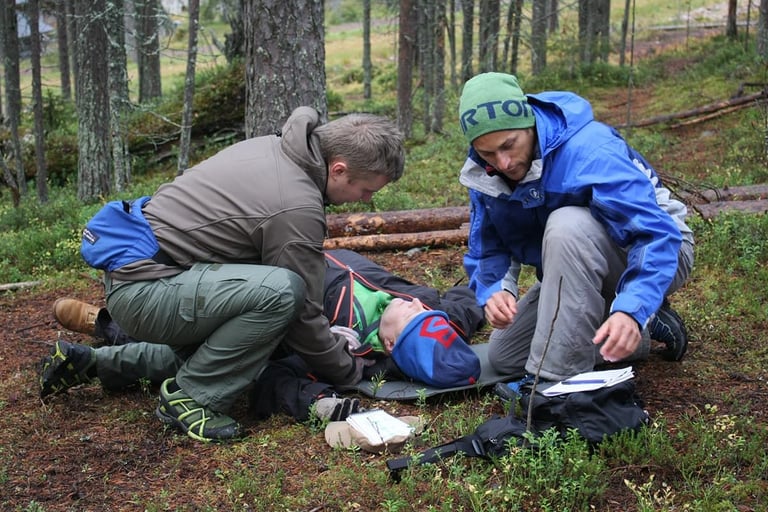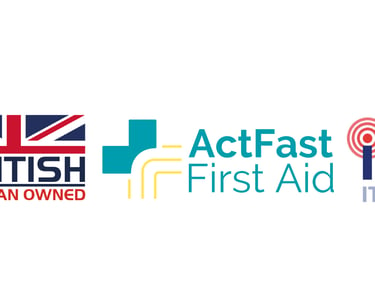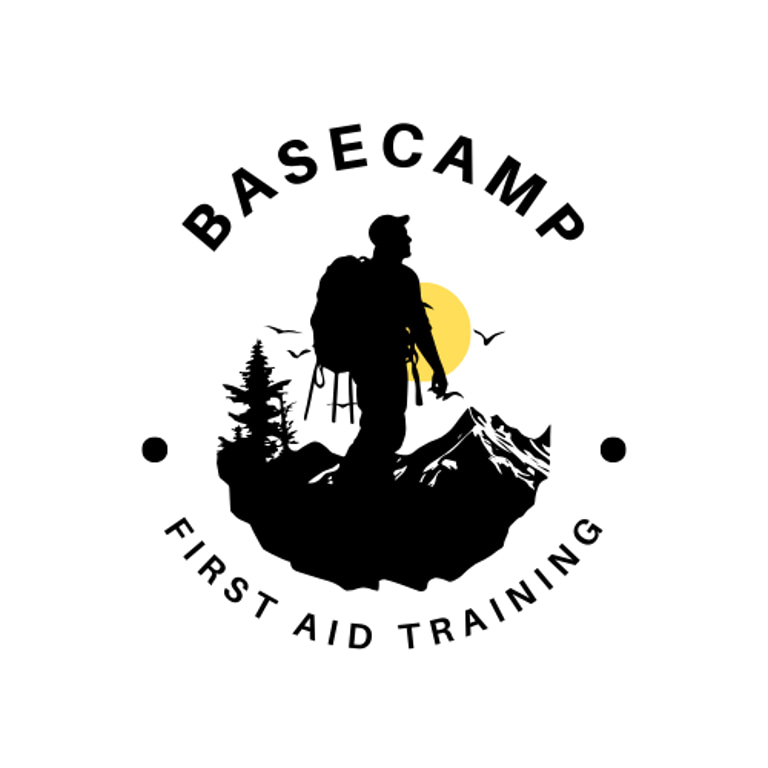ex Forces discount available - contact us now!
Calling in Mountain Rescue – Simplified Guide
When something goes wrong in the mountains, knowing how to call for help can save a life. Mountain Rescue teams carry out over 1,000 rescues every year in the UK, most initiated by members of the public. Here’s what to do.
OUTDOOR FIRST AID
5/8/20242 min read


Calling in Mountain Rescue – Simplified Guide
When something goes wrong in the mountains, knowing how to call for help can save a life. Mountain Rescue teams carry out over 1,000 rescues every year in the UK, most initiated by members of the public. Here’s what to do.
1. First Steps
If someone is injured and cannot walk, you will likely need Mountain Rescue. Carrying an adult any distance is extremely difficult – even rescue teams need 8+ people to move a stretcher.
While waiting:
Give first aid.
Keep the casualty warm, dry, and sheltered.
2. Which Number Should You Use?
Use 999 (or 112, which works the same).
Ask for: Police → Mountain Rescue
Notes:
999 and 112 work identically in the UK.
Register your phone with Emergency SMS so you can text 999 if a voice call won’t go through (poor reception, strong wind, etc).
3. What Information Should You Give?
A great structure is ATMIST:
A – Age & details (20-year-old male)
T – Time of incident (13:30)
M – Mechanism of injury (fell 20m while scrambling)
I – Injuries (head injury)
S – Signs (confused, bleeding, becoming drowsy)
T – Treatment (bandaged wound, monitoring)
Additional helpful info:
Your name and phone number
Grid reference + description of location
Hazards (steep drop, scree, etc.)
Number in group
Weather (wind strength, cloud base)
Clothing/shelter colours
Other phone numbers in your group
Caseload information using
SAMPLE:
Signs/symptoms
Allergies
Medication
Past medical history
Last food/drink
Events leading up to incident
Expect a call back from a Mountain Rescue team member.
4. Location – SARLOC
Most UK teams now use the SARLOC system, and whether they manage to speak to you or not they will send you a text and ask you to click on the internet link if you have a Smart Phone. This allows the link to interrogate your phone's GPS and it then shows your location to the team in digital mapping.
5. How Long Will Rescue Take?
Mountain Rescue is voluntary, not full-time.
A typical response might include:
Team members leaving work (10–20 mins)
Driving to base (10–20 mins)
Driving to the mountain (20 mins)
Walking to casualty location (1 hour or more)
Total: Often 1.5–2+ hours, sometimes longer.
Keep the casualty warm, fed, and sheltered during the wait.
6. Attracting Attention With No Signal
If you cannot get a signal:
Whistle – International Distress Signal
6 blasts = help needed
3 blasts = response
Torch signals at night can also help (again, 6 flashes).
7. Using a Helicopter
Modern rescues often involve a red & white Coastguard helicopter.
Important rules:
Hold both arms up in a Y shape to signal “YES – I need help”.
Secure all loose kit – helicopter downdraft is powerful.
Do not grab the first cable lowered; it may be a static discharge line.
Remove group shelters before the helicopter arrives.
At night: never shine your torch at the aircraft (night-vision damage risk).






Basecamp First Aid
Expert guidance for outdoor and workplace first aid training
Contact
Subscribe to newsletter for latest news and upcoming course information.
info@basecampfirstaid.com
07769 273116
© 2025. All rights reserved. Privacy Policy


